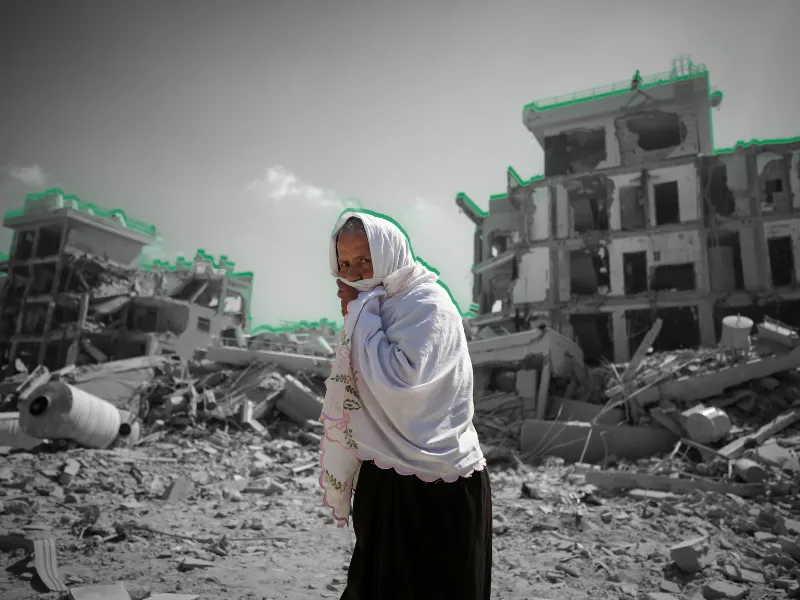By: Emmi Kivi , Nikolaj Kristensen
October 7 2024
 Source: Majdi Fathi via Reuters Connect/NURPHOTO/Reuters Marketplace - NurPhoto Pictures. Modified by Logically Facts.
Source: Majdi Fathi via Reuters Connect/NURPHOTO/Reuters Marketplace - NurPhoto Pictures. Modified by Logically Facts.
From video game footage masquerading as deadly fighting to false Pallywood footage disparaging the suffering of Gazans, Logically Facts has uncovered a staggering 782 misinformation narratives in the first year of the Israel-Hamas conflict, collected into a comprehensive report.
From the outset, the conflict has been fueled by a fire of misinformation, conspiracies, and antisemitic and Islamophobic content, which continue to rage online. The sheer scale, scope, and speed of emerging information have made it harder to distinguish truth from falsehood as millions of social media users remain glued to their screens, monitoring events in real time.
On the first anniversary of the war, Logically Facts delves into the harmful narratives we have identified since the conflict reignited on October 7, 2023. Our comprehensive analysis explores multiple misinformation themes and techniques.
We identified seven different misinformation themes:
• Operational event
• Support
• Human devastation
• Discrediting
• Civil unrest
• Staging
• U.S.-Israel relations

Bar chart displaying the seven misinformation themes and numbers of identified narratives. (Source: Logically Facts)
Footage from the conflict zones took much of the spotlight. However, misinformation narratives were not limited to the exchange of fire.
False narratives and conspiracies concerning international support and the human toll of war in Gaza permeated online platforms, with the most damaging ones denying the very existence of the conflict and the civilian toll therein.
We witnessed the emergence of the term "Pallywood," in which unrelated online content was harnessed to claim Palestinians are using crisis actors to feign injury and devastation.
Our data showed that visual content was the tactic most used for spreading misinformation — over 86 percent, or 678 narratives, were shared with edited, faked, and misattributed videos and images that flooded online platforms. Video was overwhelmingly the chosen medium for sharing misinformation.
We identified six different techniques for how the narratives were disseminated:
• Misattributed footage
• Fabricated news or authority statements
• AI-generated video/images
• Video game footage
• Edited and digitally altered videos and pictures
• Non-visual claims made primarily through text and speech

Pie chart displaying the identified six types of how misinformation was disseminated. (Source: Logically Facts)
Misinformation themes
• We found 205 individual claims about operational events of the war or conflict more generally
• 280 narratives regarded support for either party
• 67 of the narratives made claims of human devastation
• 165 narratives regarded some form of discrediting, with 68 discrediting the conflict's parties on a political level, 83 discrediting them on a military level, and 17 discrediting them on a civil level
Misinformation types or techniques
• 678 narratives including edited, faked, and misattributed videos and images
• 470 used video in a misleading way, 208 used images
• Only in 104 cases did audio/visual material play no or only a secondary role in misleading content
Misinformation risks shaping public perceptions of conflict and may induce real-life harm, such as inciting violence, social divisions, fear, and hatred, and erode trust in institutions, including in countries not directly involved in the conflict.
"Misinformation narratives can have a long-lasting impact, persisting even after being debunked. They erode trust, deepen polarisation, and make it difficult for audiences to navigate facts," Alessandro Accorsi, Senior Analyst at the International Crisis Group, told Logically Facts.
The report notes the role and responsibility of social media platforms to combat misinformation during crisis situations like the Israel-Hamas conflict. Our full findings are available as a PDF here.